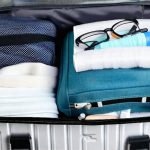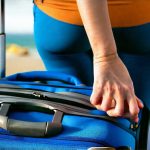Introduction
Travel, for many men, isn’t simply about reaching a destination; it’s about experiencing a shift in perspective, a temporary escape from routine, and often, a deliberate pursuit of self-discovery. However, the anxiety surrounding what to pack – the endless mental checklists, the last-minute scrambling, the nagging fear of forgetting something essential – can quickly overshadow the excitement leading up to a trip. This pre-travel stress isn’t just inconvenient; it actively detracts from the very sense of freedom and presence we hope to achieve while traveling. It’s about more than just efficient packing; it’s about cultivating a mindful approach that allows us to arrive at our destination feeling grounded, prepared, and ready to fully immerse ourselves in the experience.
Flow-conscious travel packing isn’t about minimalism for the sake of minimalism, nor is it about taking only what you absolutely need (though that’s often part of it). It’s about a deliberate curation of items based on your intended activities, the climate and culture of your destination, and most importantly, your personal sense of well-being. It’s recognizing that packing isn’t a chore, but an integral part of preparing for a more enriching travel experience. This approach acknowledges that what we choose to bring – or not bring – significantly impacts our mental state and ability to be present during our travels. It’s about streamlining your possessions so you can focus on the journey itself, rather than worrying about what you might have left behind. For men prioritizing kidney health, consider reviewing helpful hydration strategies to stay comfortable while traveling.
The Philosophy of Intentional Packing
Intentional packing begins long before you start physically gathering items. It starts with a clear vision for your trip. What is the purpose of this travel? Is it adventure, relaxation, business, or cultural immersion? Answering these questions dictates everything from clothing choices to tech gadgets. A hiking trip will necessitate robust footwear and moisture-wicking apparel, while a city break might prioritize versatile outfits that transition easily between day and night. Avoid the temptation to pack “just in case” items for scenarios that are unlikely to occur. This is where most overpacking happens – filling your bag with possibilities you’ll likely never need.
A core tenet of flow-conscious packing is understanding your personal travel style. Are you someone who thrives on having options, or do you prefer a lean and efficient approach? There’s no right or wrong answer; it’s about knowing yourself. If you generally wear the same few outfits at home, chances are you won’t suddenly become a fashion icon while traveling. Embrace your existing habits and preferences. This doesn’t mean ignoring opportunities to experiment with new styles – simply don’t let packing be an excuse for unnecessary clutter or items that will remain unworn. Those prone to UTIs might also find helpful daily routines to minimize risk during travel.
Finally, consider the concept of “layers.” Layering allows you to adapt to changing weather conditions without overpacking bulky items. A versatile base layer, a mid-layer fleece or sweater, and a waterproof outer shell can cover a wide range of climates. This principle applies not just to clothing but also to accessories. A multi-functional scarf can serve as warmth, sun protection, or even an improvised towel in a pinch. The key is versatility – choosing items that can serve multiple purposes.
Building the Core Wardrobe
A flow-conscious travel wardrobe for men isn’t about having a vast collection of clothing; it’s about assembling a core set of versatile pieces that can be mixed and matched to create numerous outfits. Start with neutral colors—navy, gray, black, olive green, and white—as they are easier to combine and coordinate. This allows you to build around these foundational pieces without worrying about clashing colors or patterns.
- T-shirts (3-5): Opt for moisture-wicking materials if you anticipate being active. Merino wool is an excellent choice as it’s naturally odor-resistant.
- Long-sleeved shirts (2-3): These provide extra warmth and sun protection. Again, consider merino wool or other breathable fabrics.
- Versatile pants/chinos (2): Choose a color that complements your t-shirts and long-sleeved shirts. Consider travel-friendly materials like wrinkle-resistant nylon blends.
- Shorts (1-2): If your destination warrants it.
- Lightweight jacket/windbreaker (1): Essential for unpredictable weather or cool evenings.
- Sweater/fleece (1): For added warmth.
Prioritize fabrics that are quick-drying, wrinkle-resistant, and comfortable. This minimizes the need for ironing or extensive laundry while traveling. Don’t underestimate the power of a well-chosen pair of shoes. Comfortable walking shoes are paramount, but consider bringing an additional pair – perhaps sandals or dress shoes – depending on your planned activities. If you’re preparing for active travel, review exercise guidelines to stay comfortable.
Mastering Toiletries & Personal Care
Toiletries often contribute significantly to packing weight and bulk. The goal is to streamline this category without sacrificing essential hygiene. Consider switching from large bottles of shampoo and body wash to travel-sized containers, or even solid alternatives like shampoo bars and soap bars. These are lighter, take up less space, and eliminate the risk of spills.
- Toothbrush, toothpaste, floss
- Deodorant (travel size)
- Sunscreen (essential for any outdoor activity)
- Insect repellent (if applicable)
- Basic skincare items (face wash, moisturizer)
- Any necessary medications (with prescriptions if required)
- Small first-aid kit (bandages, antiseptic wipes, pain relievers)
Invest in reusable travel bottles. This is both environmentally friendly and cost-effective. Also, remember to check airline regulations regarding liquids; typically, you’re limited to containers of 3.4 ounces or less placed in a clear, quart-sized bag. Finally, don’t pack things you can easily purchase at your destination – shampoo, conditioner, body wash, etc. Save space and weight by buying them locally if possible.
Tech & Accessories: Less is Truly More
Technology can enhance travel experiences, but it’s also a common source of overpacking. Resist the urge to bring every gadget you own. Focus on essentials that genuinely contribute to your trip. A smartphone is often sufficient for navigation, communication, and entertainment. Consider bringing a portable power bank to keep your devices charged on the go. Noise-canceling headphones can be invaluable for long flights or noisy environments. Men concerned about bladder sensitivity might find helpful warmth management tips to stay comfortable.
- Smartphone + charger
- Portable power bank
- Headphones (noise-canceling if desired)
- Universal adapter (if traveling internationally)
- Camera (optional, depending on your photography interests)
- E-reader/tablet (optional, for reading or entertainment)
Be mindful of the weight and size of each item. A bulky DSLR camera might be great for professional photographers, but a smartphone camera is often sufficient for casual travelers. Also, consider leaving unnecessary cables and accessories at home. Focus on bringing only what you truly need to stay connected and entertained during your journey. The goal isn’t to have every piece of tech available; it’s to have the right pieces that enhance your experience without weighing you down. Planning travel meals with urinary safety in mind is also crucial, as detailed in this article.





















